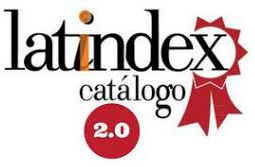Estudio de la imagen de marca empleando la escala del carácter corporativo de Davies
Un caso en la Argentina
Resumen
Propósito: El objetivo principal de este trabajo es medir empíricamente la imagen de marca de la firma Yagmour, una empresa argentina especializada en indumentaria femenina, empleando para ello la Escala del carácter corporativo (o personalidad corporativa) desarrollada por Davies et al. (2004). A partir de los resultados de la medición se planea identificar segmentos subyacentes de consumidoras tomando como base las dimensiones de personalidad de marca corporativa de la escala. Diseño/Metodología/Aproximación: Los datos se obtuvieron a partir de una encuesta en línea a 657 clientas de la marca que residen en la ciudad de Buenos Aires y en el conurbano bonaerense. Para el análisis de datos y redefinición de la escala de medida se emplearon modelos de ecuaciones estructurales o SEM. Mediante el empleo de los análisis discriminantes y de conglomerados o cluster se segmentaron a las clientas de acuerdo con sus percepciones de personalidad de la marca Yagmour. Hechos encontrados: De las siete dimensiones propuestas por Davies (2004) sólo tres resultaron relevantes para la marca bajo estudio. A partir de la segmentación emergieron claramente tres grupos de clientas identificadas por el autor como las distantes, las entusiastas y las apáticas. Originalidad/Valor: Si bien los estudios de la personalidad corporativa que han empleado escalas factoriales tales como la de Aaker (1997) y Davies et al. (2004) han alcanzado a diversos productos y servicios en distintos países, el valor principal de la presente investigación radica en aplicar por primera vez tal metodología al análisis de una marca que comercializa productos de consumo masivo en la Argentina.
Descargas
Citas
Aaker, D. A. (1994). Gestión del valor de la marca: capitalizar el valor de la marca. Madrid: Díaz de Santos.
Aaker, D. A. (1996). Building strong brands. New York: Free Press.
Aaker, J. L. (1997). Dimensions of brand personality. Journal of Marketing Research 34 (3), 347-356.
Aaker, J. L., Benet-Martinez, V. & Garolera, J. (2001). Consumption symbols as carriers of culture: a study of Japanese and Spanish brand personality constructs. Journal of Personality and Social Psychology 81 (3), 492-508.
Apéria, T. & Back, R. (2004). Brand relations management: bridging the gap between brand promise and brand delivery. Liber: Copenhagen Business School Press.
Arbuckle, J. L. (2009). Amos 18.0 user’s guide. Chicago: SPSS Inc.
Argentina. Ministerio de Relaciones Exteriores, Comercio Internacional y Culto (2010). Sector de la industria de la indumentaria. Buenos Aires: Dirección de Oferta Exportable, Dirección General de Estrategias de Comercio Exterior, Subsecretaría de Comercio Internacional, Ministerio de Relaciones Exteriores. (Informe sectorial).
Azoulay, A. & Kapferer, J.-N. (2003). Do brand personality scales really measure brand personality? Journal of Brand Management 11 (2), 143-155.
Bagozzi, R. P. (1996). Principles of marketing research. Oxford: Blackwell.
Balmer, J. M. T. & Gray, E. R. (2003). Corporate brands: what are they? what of them? European Journal of Marketing 37 (7/8), 972.
Batra, R. & Pamela Miles, H. (2004). The situtational impact of brand image beliefs. Journal of Consumer Psychology 14 (3), 318-330.
Bosnjak, M., Bochmann, V. & Hufschmidt, T. (2007). Dimensions of brand personality attributions: a personcentric approach in the german cultural context. Social Behavior & Personality 35 (3), 303-316.
Bridson, K. & Evans, J. (2004). The secret to a fashion advantage is brand orientation. International Journal of Retail & Distribution Management 32 (8/9), 403-411.
Brislin, R. W., Lonner, W. J. & Thorndike, R. M. (1973). Cross-cultural research methods. New York: J. Wiley.
Bromley, D. B. (2000). Psychological aspects of corporate identity, image and reputation. Corporate Reputation Review 3 (3), 240-252. doi: 10.1057/palgrave.crr.1540117.
Brown, T. A. (2006). Confirmatory factor analysis for applied research. New York: Guilford Press.
Byrne, B. M. & Watkins, D. (2003). The issue of measurement invariance revisited. Journal of Cross-Cultural Psychology 34 (2), 155.
Campbell, D. T. & Fiske, D. W. (1959). Convergent and discriminant validations by the multitrait-multi-method matrix. Psychological Bulletin 56, 81-105.
Caruana, A. (1997). Corporate reputation: concept and measurement. Journal of Product & Brand Management 6 (2), 109.
Da Silva, R. V. & Syed Alwi, S. F. (2008). Online corporate brand image, satisfaction and loyalty. Journal of Brand Management 16 (3), 119-144. doi: 10.1057/palgrave.bm.2550137
Davies, G. (2003). Corporate reputation and competitiveness. London: Routledge.
Davies, G. & Chun, R. (2002). Gaps between the internal and external perceptions of the corporate brand. Corporate Reputation Review 5 (2/3), 144.
Davies, G., Chun, R., da Silva, R. V. & Roper, S. (2001). The personification metaphor as a measurement approach for corporate reputation. Corporate Reputation Review 4 (2), 113.
Davies, G., Chun, R., Da Silva, R. V. & Roper, S. (2004). A corporate character scale to assess employee and customer views of organization reputation. Corporate Reputation
Review 7 (2), 125-146.
de Chernatony, L. & Riley, F. D. O. (1998). Defining a “brand”: beyond the literature with experts’ interpretations. Journal of Marketing Management 14 (4/5), 417-443.
Dobni, D. & Zinkhan, G. M. (1990). In search of brand image: a foundation analysis. Advances in Consumer Research 17 (1), 110-119.
Elliott, R. H., Percy, L. & Pervan, S. (2011). Strategic brand management. Oxford: Oxford University Press.
Farquhar, P. H. (1990). Managing brand equity. Journal of Advertising Research 30 (4), RC-7-RC-12.
Freeman, R. E. (1984). Strategic management: a stakeholder approach. Boston: Pitman.
Garver, M. S. & Mentzer, J. T. (1999). Logistics research methods: employing structural equation modeling to test for construct validity. Journal of Business Logistics 20 (1), 33-57.
Geuens, M., Weijters, B. & De Wulf, K. (2009). A new measure of brand personality. International Journal of Research in Marketing 26 (2), 97-107. doi: 10.1016/j.ijresmar.2008.12.002.
Goldberg, L. R. (1992). The development of markers for the Big-five factor structure. Psychological Assessment 4 (1), 26-42. doi: 10.1037/1040-3590.4.1.26.
Graeff, T. R. (1996). Using promotional messages to manage the effects of brand and self-image on brand evaluations. Journal of Consumer Marketing 13 (3), 4-18.
Grande Esteban, I. & Abascal Fernández, E. (2009). Fundamentos y técnicas de investigación comercial (10a. ed.). Madrid: ESIC.
Grohmann, B. (2009). Gender dimensions of brand personality. Journal of Marketing Research 46 (1), 105-119. doi: 10.1509/jmkr.46.1.105.
Guilford, J. (1973). On personality. En: W. Mischel (ed.). Introduction to personality (pp. 22-23). New York: Holt, Rinehart & Winston.
Hair, J. F. (2006). Multivariate data analysis (6th ed.). Upper Saddle River, New Jersey: Pearson Prentice Hall.
Hair, J. F., Jr., Anderson, R. E., Tatham, R. L. & Black, W. C. (1999). Análisis multivariante. Madrid: Prentice Hall Iberia.
Hanby, T. (1999). Brands: dead or alive? Journal of the Market Research Society 41 (1), 7-18.
Harris, F. & de Chernatony, L. (2001). Corporate branding and corporate brand performance. European Journal of Marketing 35 (3/4), 441.
Hatcher, L. (1994). A step-by-step approach to using the SAS system for factor analysis and structural equation modeling. Cary, North Carolina: SAS Institute.
Herzog, H. (1963). Behavioral sciences concepts for analyzing the consumer. En: P. Bliss (ed.). Marketing and the behavioral sciences (p. 76-86). Boston: Allyn and Bacon.
John, M. T., Hirsch, C., Reiber, T. & Dworkin, S. F. (2006). Translating the research diagnostic criteria for temporomandibular disorders into German. Journal of Orofacial Pain 20 (1), 43-52.
Jones, P. S., Lee, J. W., Phillips, L. R., Zhang, X. E. & Jaceldo, K. B. (2001). An adaptation of Brislin’s translation model for cross-cultural research. Nursing Research 50 (5), 300-304.
Jöreskog, K. G., Sörbom, D. & SPSS Inc. (1988). LISREL 7: a guide to the program and applications. Chicago: SPSS.
Kapferer, J.-N. (2001). (Re)inventing the brand: can top brands survive the new market realities? London: Kogan Page.
Keller, K. L. (1993). Conceptualizing, measuring, and managing customer-based brand equity. Journal of Marketing 57 (1), 1-1.
Keller, K. L. (1998). Strategic brand management: building, measuring and managing brand equity. Upper Saddle River, New Jersey: Prentice-Hall.
Keller, K. L. & Lehmann, D. R. (2003). How do brands create value? Marketing Management 12 (3), 26-31.
Kenny, D. A. (2012). Multiple latent variable models: confirmatory factor analysis. Tomado en mayo de 2012 de: http://davidakenny.net/cm/mfactor.htm
King, S. (1973). Developing new brands. London: Pitman.
Kinnear, T. C., Taylor, J. R., Rosas Lopetegui, G. E. & Jany Castro, J. N. (1998). Investigación de mercados: un enfoque aplicado (5a. ed.). Bogotá: McGraw-Hill.
Kline, R. B. (2005). Principles and practice of structural equation modeling (2nd ed.). New York: Guilford Press.
Kotler, P. & Armstrong, G. (1996). Principles of marketing (7th ed.). Englewood Cliffs, New Jersey: Prentice Hall.
Kotler, P. & Keller, K. L. (2006). Marketing management (12th ed.). Upper Saddle River, New Jersey: Pearson Prentice Hall.
Kotler, P. & Turner, R. E. (1981). Marketing management: analysis, planning, and control (Canadian 4th ed.). Scarborough, Ontario: Prentice-Hall.
Lévy Mangín, J.-P., Varela Mallou, J. & Abad González, J. (2006). Modelización con estructuras de covarianzas en ciencias sociales: temas esenciales, avanzados y aportaciones especiales. [Oleiros]: Netbiblo.
Loehlin, J. C. (1998). Latent variable models: an introduction to factor, path, and structural analysis (3rd ed.). Mahwah, New Jersey: Lawrence Erlbaum.
Low, G. S. & Lamb, C. W., Jr. (2000). The measurement and dimensionality of brand associations. Journal of Product and Brand Management 9 (6), 350-368.
Lubke, G. H., Dolan, C. V., Kelderman, H. & Mellenbergh, G. J. (2003). Weak measurement invariance with respect to unmeasured variables: an implication of strict factorial invariance. British Journal of Mathematical & Statistical Psychology 56, 231.
Luque Martínez, T. (2000). Técnicas de análisis de datos en investigación de mercados. Madrid: Pirámide.
Marsh, H. W., Balla, J. R. & McDonald, R. P. (1988). Goodness-of-fit indexes in confirmatory factor analysis: the effect of sample size. Psychological Bulletin 103 (3), 391-410.
McDermott, M. A. & Palchanes, K. (1992). A process for translating and testing a quantitative measure for crosscultural nursing research. Journal of the New York State Nurses Association 23 (4), 12-15.
Milas, G. & Mlačić, B. (2007). Brand personality and human personality: findings from ratings of familiar Croatian brands. Journal of Business Research 60 (6), 620-626. doi: 10.1016/j.jbusres.2006.06.011
Montenegro Biscardi, G. (2011). El negocio de la moda. ReviUM: revista online de la Universidad de Mendoza. Tomado en mayo de 2012 de: http://www.revium.com.ar/index.php?option=com_content&view=article&id=409:elnegocio-de-la-moda&catid=143:german-montenegro-biscardi&Itemid=48
Mueller, R. O. (1996). Basic principles of structural equation modeling: an introduction to LISREL and EQS. New York: Springer.
Nunnally, J. C. (1978). Psychometric theory (2nd ed.). New York: McGraw-Hill.
Padgett, D. & Allen, D. (1997). Communicating experiences: a narrative approach to creating service brand image. Journal of Advertising 26 (4), 49-62.
Percy, L. (2012). Strategic advertising management (4th ed.). New York: Oxford University Press.
Plummer, J. T. (2000). How personality makes a difference. Journal of Advertising Research 40 (6), 79-83.
Rojas-Méndez, J., Erenchun-Podlech, I. & Silva-Olave, E. (2004). The Ford brand personality in Chile. Corporate Reputation Review 7 (3), 232-251.
San Martín Gutiérrez, S. (2003). Depuración de escalas en marketing: una aplicación práctica. Metodología de Encuestas 5 (2), 187-211.
Schumacker, R. E. & Lomax, R. G. (2004). A beginner’s guide to structural equation modeling (2nd ed.). Mahwah, New Jersey: Lawrence Erlbaum Associates.
Sechrest, L, Fay, TL & Hafeez Zaidi, S. M. (1972). Problems of translation in cross-cultural research. Journal of Cross-Cultural Psychology 3 (1), 41-56.
Siguaw, J. A. & Mattila, A. (1999). The brand-personality scale: an application for restaurants. Cornell Hotel & Restaurant Administration Quarterly 40 (3), 48-94.
Simoes, C. & Dibb, S. (2001). Rethinking the brand concept: new brand orientation. Corporate Communications 6 (4), 217-224.
Smit, E. G., van den Berge, E. & Franzen, G. (2003). Brands are just like real people! En: F. Hansen & L. B.
Christensen (eds.). Branding and advertising (p. 22-43). Copenhagen: Copenhagen Business School Press.
Soanes, C. & Stevenson, A. (2008). Concise Oxford English dictionary (11th ed.). Oxford: Oxford University Press.
Solomon, M. R. (2009a). Consumer behavior: buying, having, and being (8th ed.). Upper Saddle River, New Jersey: Pearson/Prentice Hall.
Solomon, M. R. (2009b). The truth about what customers want. Upper Saddle River, New Jersey: FT Press.
Steenkamp, J.-B. E. M. & van Trijp, H. C. M. (1991). The use of LISREL in validating marketing constructs.
International Journal of Research in Marketing 8 (4), 283-299.
Sung, Y. & Tinkham, S. F. (2005). Brand personality structures in the United States and Korea: common and culture-specific factors. Journal of Consumer Psychology 15 (4), 334-350. doi: 10.1207/s15327663jcp1504_8.
Syed Alwi, S. F. & Da Silva, R. V. (2007). Online and offline corporate brand images: do they differ? Corporate Reputation Review 10 (4), 217-244. doi: 10.1057/palgrave.crr.1550056.
West, S. G., Finch, J. F. & Curan, P. J. (1995). Structural equation models with nonnormal variables: problems and remedies. En: R. H. Hoyle (ed.). Structural equation modeling: concepts, issues, and applications (v. 9, p. 56-75). Thousand Oaks, California: Sage.
Wicherts, J. M., Dolan, C. V. & Hessen, D. J. (2005). Stereotype threat and group differences in test performance: a question of measurement invariance. Journal of Personality & Social Psychology 89 (5), 696-716. doi: 10.1037/0022-3514.89.5.696.
Zentes, J. Morschett, D. & Schramm-Klein, H. (2008). Brand personality of retailers: an analysis of its applicability and its effect on store loyalty. International Review of Retail, Distribution and Consumer Research 18 (2), 167-184.
Zinkhan, G. M., Haytko, D. L. & Ward, A. (1996). Self-concept theory: applications in advertising. Journal of Marketing Communications 2 (1), 1-19. doi: 10.1080/13527269600000001.
Derechos de autor 2012 Domingo Sanna

Esta obra está bajo licencia internacional Creative Commons Reconocimiento-NoComercial 4.0.
Los autores conservan los derechos de autor y garantizan a la revista el derecho de ser la primera publicación del trabajo. En caso de que puedan publicar en otra revista una traducción del artículo ya publicado en Austral Comunicación, se pide dejar constancia en la versión traducida sobre la publicación original.
La licencia utilizada es CC BY-NC-SA, que permite compartir (copiar y redistribuir el material en cualquier medio y formato) y adaptar (remezclar, transformar y construir sobre el material) bajo los siguientes términos: atribución (reconocer la autoría) y no comercial (no se puede utilizar el material para fines comerciales). Actualización: 1 de febrero de 2022.
Austral Comunicación permite al autor(es) retener los derechos de publicación sin restricciones.











































